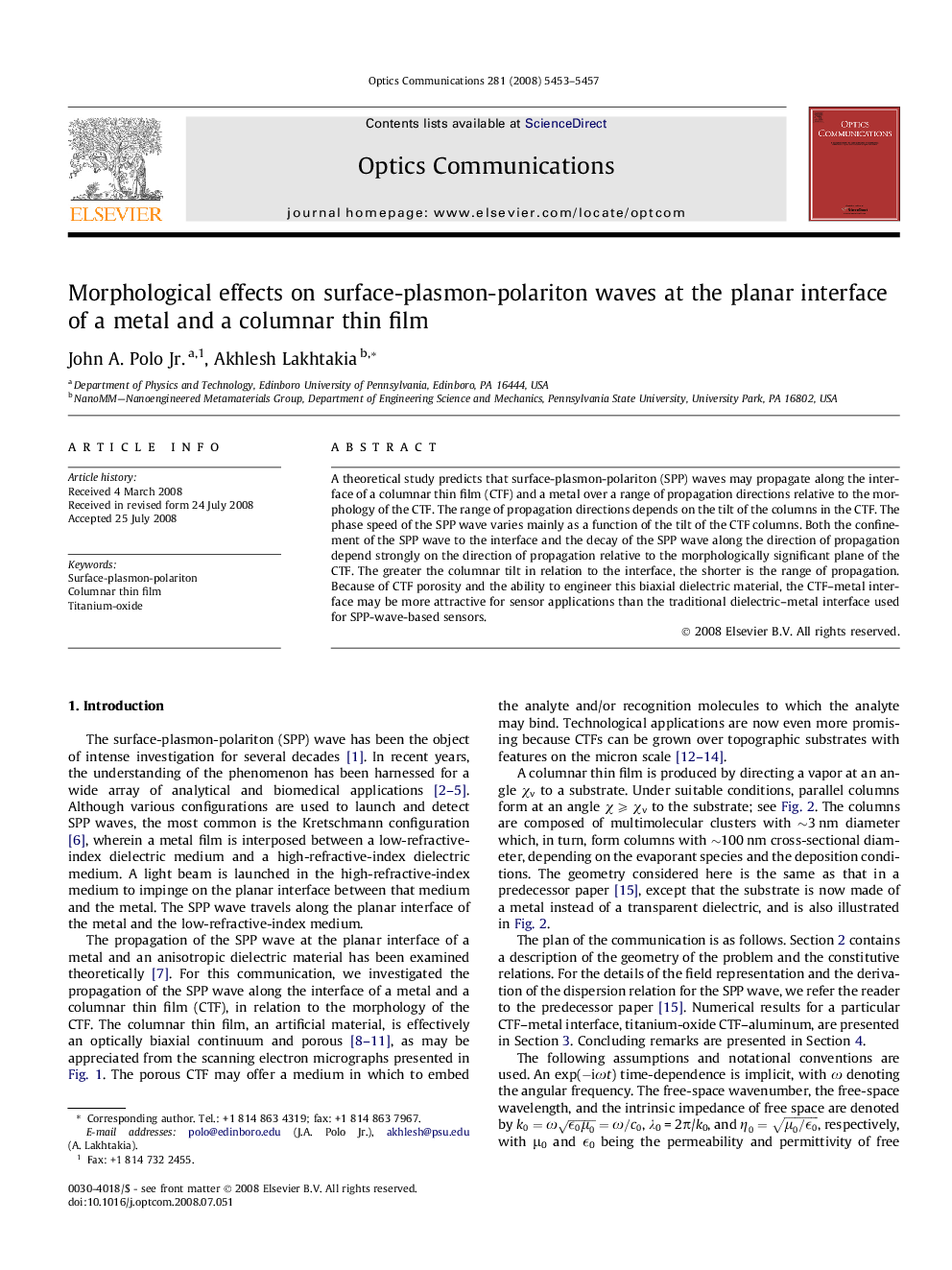| Article ID | Journal | Published Year | Pages | File Type |
|---|---|---|---|---|
| 1540504 | Optics Communications | 2008 | 5 Pages |
Abstract
A theoretical study predicts that surface-plasmon-polariton (SPP) waves may propagate along the interface of a columnar thin film (CTF) and a metal over a range of propagation directions relative to the morphology of the CTF. The range of propagation directions depends on the tilt of the columns in the CTF. The phase speed of the SPP wave varies mainly as a function of the tilt of the CTF columns. Both the confinement of the SPP wave to the interface and the decay of the SPP wave along the direction of propagation depend strongly on the direction of propagation relative to the morphologically significant plane of the CTF. The greater the columnar tilt in relation to the interface, the shorter is the range of propagation. Because of CTF porosity and the ability to engineer this biaxial dielectric material, the CTF-metal interface may be more attractive for sensor applications than the traditional dielectric-metal interface used for SPP-wave-based sensors.
Keywords
Related Topics
Physical Sciences and Engineering
Materials Science
Electronic, Optical and Magnetic Materials
Authors
John A. Jr., Akhlesh Lakhtakia,
